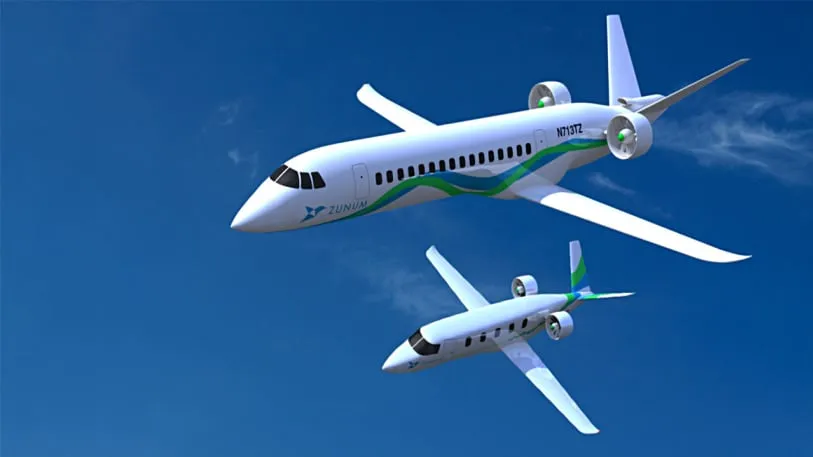
Electric-jet hybrid could rekindle services to small cities.
May 07, 2017

An electric-jet hybrid aircraft could revolutionize air travel for underserved small cities by providing sustainable and cost-effective transportation options. These innovative planes combine electric and traditional jet technologies, significantly reducing emissions and operational costs. This development could make regional flights more viable, enhancing connectivity and economic opportunities for smaller communities. Airlines may find it easier to establish routes to these areas, improving access to jobs, education, and healthcare. The potential for shorter travel times and lower ticket prices could further stimulate local economies, fostering growth and revitalization in regions that have long been overlooked by major air service providers.
Understanding Electric-Jet Hybrids
The advent of electric-jet hybrid technology marks a transformative era in aviation. By integrating electric propulsion with traditional jet engines, these aircraft aim to enhance fuel efficiency while minimizing emissions. This innovation is particularly vital for the aviation industry, which has been under pressure to reduce its carbon footprint. Electric-jet hybrids are designed to operate using electricity during takeoff and landing phases, reducing noise pollution and environmental impact significantly.
Benefits of Electric-Jet Hybrids for Small Cities
Small cities often struggle with limited air service options due to the high operational costs associated with traditional aviation. Electric-jet hybrids could "revitalize air travel" in these areas by offering more economical and environmentally friendly options. Some of the key benefits include:
- Cost Efficiency: Lower operational costs translate to more affordable ticket prices, making air travel accessible to a larger demographic.
- Increased Accessibility: Airlines can operate routes to smaller airports without significant financial risks, thereby connecting these cities to larger hubs.
- Environmental Impact: Reduced emissions and noise pollution make electric-jet hybrids an attractive option for communities concerned about their environmental footprint.
Electric-Jet Hybrid Technology in Action
Several companies are currently developing electric-jet hybrid aircraft, demonstrating the feasibility of this technology. For instance, manufacturers are testing various prototypes capable of transporting passengers over short to medium distances. This development is crucial for small cities, as efficient routes can be established, leading to increased economic opportunities.
Potential Impact on Local Economies
Bringing back air services with electric-jet hybrids could have a significant impact on local economies. Here are a few ways these aircraft can stimulate growth:
Job Creation
As air services expand, local businesses such as hotels, restaurants, and service providers will benefit. This creates job opportunities both directly and indirectly related to airlines.
Boosting Tourism
Improved air connectivity can attract tourists to small cities. With the ability to reach these destinations more easily, tourism-related revenue will likely see a notable increase.
Supporting Local Businesses
Enhanced connectivity allows for better distribution of local goods and services. Small businesses can reach broader markets, increasing sales and growth potential.
Challenges to Overcome
Despite the promising outlook for electric-jet hybrids, several challenges must be addressed before widespread adoption can occur:
- Infrastructure Needs: Small airports will require upgrades to accommodate electric-jet hybrid technology, including charging stations and maintenance facilities.
- Regulatory Hurdles: Aviation regulators will need to establish new guidelines and safety standards for these hybrid aircraft, which could slow down their introduction into the market.
- Public Perception: Gaining public trust in new technology is essential. Education and outreach will be critical to inform potential passengers about the safety and benefits of electric-jet hybrids.
Chart: Comparison of Traditional Jets vs. Electric-Jet Hybrids
| Feature | Traditional Jets | Electric-Jet Hybrids |
|---|---|---|
| Fuel Efficiency | Moderate | High |
| Emissions | High | Low |
| Noise Pollution | High | Low |
| Operational Costs | High | Lower |
| Accessibility to Small Cities | Limited | Enhanced |
Future Outlook
As technology continues to evolve, the potential for electric-jet hybrids to revolutionize air travel is becoming increasingly apparent. With the right investments in infrastructure and a supportive regulatory framework, many small cities can look forward to a future where air travel is not only accessible but also sustainable. This innovation could lead to a network of connected communities, fostering economic growth and enhancing the quality of life for residents.
Conclusion
In summary, electric-jet hybrids represent a significant leap forward in aviation technology, particularly for small cities. With their numerous benefits ranging from "cost efficiency" to "environmental sustainability", these aircraft could rekindle air services that have dwindled over the years. As we stand on the brink of this new aviation era, the focus will be on overcoming challenges and harnessing the full potential of electric-jet hybrids for the betterment of communities across the globe.
Related Articles

Explore Thailand: The Best Islands to Visit for Paradise, Adventure, and Relaxation

The Ultimate Guide to the Best Islands in Thailand for Your Next Getaway

Do babies need passports? How to get a passport for a newborn

How to get a U.S. passport fast: here’s how to expedite the process

What is Mobile Passport Control: 5 reasons why you should use it

SENTRI vs. Global Entry: A detailed guide

Do you need a passport to go to the Bahamas? Let’s find out

Do you need a passport to go to Mexico? A detailed guide

Do you need a passport to go to Canada? We got the answer

Do You Need a Passport for a Cruise: An Essential Travel Guide

Booster Seat Requirements: All the Rules to Follow in Your Rental Car

What Are the World’s Most Powerful Passports, and How Does Yours Rank?

How to Take a Passport Photo at Home: A Helpful Guide

You've got to have heart! Southwest's new livery

Your opinion: Should water be free on low cost carriers?

Young women bolder than guys as solo travellers
